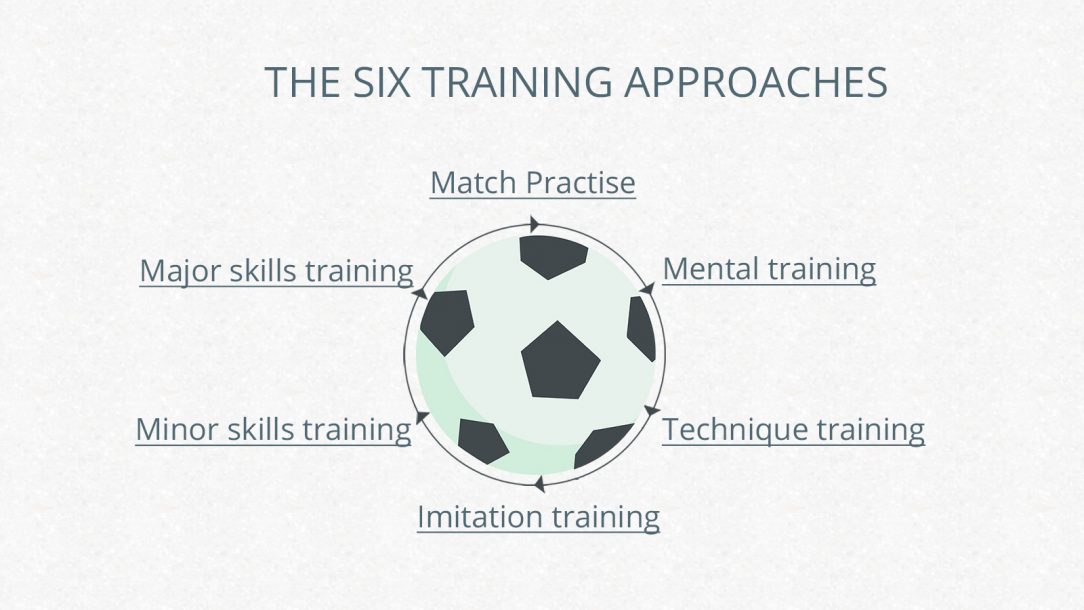
Illustration: Giske Defending.
As a young, enthusiastic and ambitious football player, I thought that I had to train a lot to be a professional player. And I was right. However, I also believed that the best strategy was to train as much and as hard as possible.
One of the biggest reasons why I chose to play for SK Brann, Bergen (among the many other top clubs available in Norway) was because they offered me the chance to train as much as possible. Through their network, they could offer me a position as a sports assistant in the Navy.
Everything seemed to be perfect. In the Navy, I met another sports assistant, Eddie Kalleklev, who was an elite kayaker. He became my friend and my training partner, and we pushed each other to the limit every day. As a 19-year-old player, I looked forward to my first season in the elite division, and I thought I was well prepared for what lay ahead.
I thought I was well prepared for my first season in the elite division.
However, I was definitely not prepared.
During one friendly match the week before the first league match, I sustained a serious injury in the groin and abdominal region. I had over trained, and this caused me significant pain and problems; for example, I lacked the basic ability to run at full speed. The injury that I sustained as a direct result of overtraining became a serious issue that affected my performance over the next two years.
I learned one of the most important lessons of my professional life the hard way, and I was forced to completely rethink my philosophy on training.
Why had I previously thought that more was always best?
I certainly wasn’t the only player or coach to prescribe to this perception. In fact, such a philosophy represents the norm as opposed to the exception in many sports.
I was forced to completely rethink my philosophy on training.
Why do so many players and coaches actually think that training harder will solve all their problems?
My training approach was both my strength but also my breaking point, as I so disastrously found out for myself when I sustained the groin injury.
My main problem that I was relying on the logical side of my brain instead of the creative side. And I think that this is an issue that continues to impact people from all walks of life, be it in academic or sporting contexts.
One of the biggest points at which many people make a mistake in their training approach is right at the start of the process. Once you have chosen the place at which you will commence your training, you automatically limit yourself to a number of logical conclusions. This is a problem. What happens if the starting point you have chosen is not right for your needs?
Another issue that is associated with taking a logical approach to training is that you end up trying to master too many skills. In reality, it is much better to focus all your energy on fully mastering three coaching points as opposed to reaching a satisfactory level in ten.
What happens if the starting point you have chosen is not right for your needs?
Quality beats quantity every time!
The same logic applies when we talk about exercises. Completing lots of exercises of a poor quality is nowhere near as effective as focusing your efforts on performing a few exercises to an exceptional standard.
The logical approach has its uses. In fact, it is pretty important if you want to become a renowned mathematician or physicist. However, developing the skills you will need to excel as a defensive football player is not something that will progress in a linear and logical manner.
To really make the most of your training time and activity, you need to adapt a training approach that finds the right balance between logical and creative thinking processes and combines them in just the right way to achieve a continuous improvement in your abilities.
Even after all these years as a professional player and coach, I still need to continually remind myself of the need to tune down my logical dominance and open up and invest in my creative thinking.
So, why am I so against coaches relying too much on pre-designed exercises?
Exercises are important. They are important for the planning, flow and outcome of the training session. They are also very popular because there are many advantages to using pre-designed exercises during a training session
Your training approach should find the right balance between logical and creative thinking processes
First and foremost using pre-defined exercises allows you to:
- Use tried and tested methods. The majority of exercises you may use in your training sessions have probably been proven to work well. This means you do not need to worry too much about “trial and error” during training sessions.
- Engage the players. Pre-defined exercises work really well within games and as warm-up drills at the beginning of training sessions. These types of exercise can be really good fun; as such, they are likely to engage the players while also teaching them some valuable skills.
- Deliver coaching sessions in a progressive way, which is necessary for the motivation and progression of the player’s development.
However, in reality, many of the exercises you may use were probably developed with novice coaches who have limited expertise and time in mind. While they undoubtedly have some advantages, they are not without their disadvantages.
An exercise is not only an exercise.
When you design the exercises you will use in your training sessions, you should be thinking about the individual players and members of the team, their challenges, and their needs. If you fail to do so, you may find that pre-designed exercises limit your success in the following ways:
- They deliver inadequate performance. While the methods may, indeed, be tried and tested, following them in a rote manner may mean that you miss out on an important opportunity to mentally engaged with the members of your team and to prepare them to become the best players they can be.
- You may demotivate the players. There is a big difference between an activity and a coach. The players notice pretty quickly if a coach is well prepared or not.
- They result in an inadequate learning environment. If you do not invest sufficient time to prepare, plan, execute, and evaluate your training approach, sooner or later the performance of your team and each individual member within it will begin to stagnate.
I think professional coaches should be critical of any training approach that employs pre-designed exercises “the easy way”. There is a big difference between blindly copying exercises and developing a set of exercises that are inspired by the tried and tested methods but subsequently modified to suit your team.
My experience tells me that the good coaches employ a few exercises that they have taken significant time to develop and master. This approach allows them to concentrate on the most important issues, while coaches who are at a lower level probably believe they have to switch exercises all the time.
My experience tells me that the good coaches employ a few exercises that they have taken significant time to develop and master.
How Can Coaches Optimise Learning?
Children are very curious and full of wonder. They want to learn. That’s why they so often repeat the question why: they take every opportunity to understand and gain insights. And the only way to achieve this is to ask questions.
As we age and pass through the education system to eventually take on a role as a coach, we often forget our past and native needs. We typically teach players by telling them exactly WHAT they should learn and how they should act.
But do the children get insights and optimise learning if they are simply told what they should do? Do we address their needs and solve their problems when we adopt this approach?
There is nothing wrong with telling players what skills and tactics they need to master. I think this is pretty easy and might be a good way of inspiring and challenging players.
However, showing them how to do it and giving them direction and individual tips that are tailored to their individual skills is challenging and requires a lot of experience and professional competence. And this is where the challenges lay.
As I see it, coaches need to:
- Explain and show the players different strategies regarding what they can (or should) do.
- Visualise how they can or should do it.
- Involve players by asking questions and answering their many simple, but difficult, “why?” questions (stated and not stated) in a way that they understand.
I think this will give real value to players and remain an unforgettable experience for the rest of their lives; as such, it should be the primary objective of any aspiring coaches.
There is only one thing that is certain: there is no fixed answer.
There is only one thing that is certain: there is no fixed answer.

